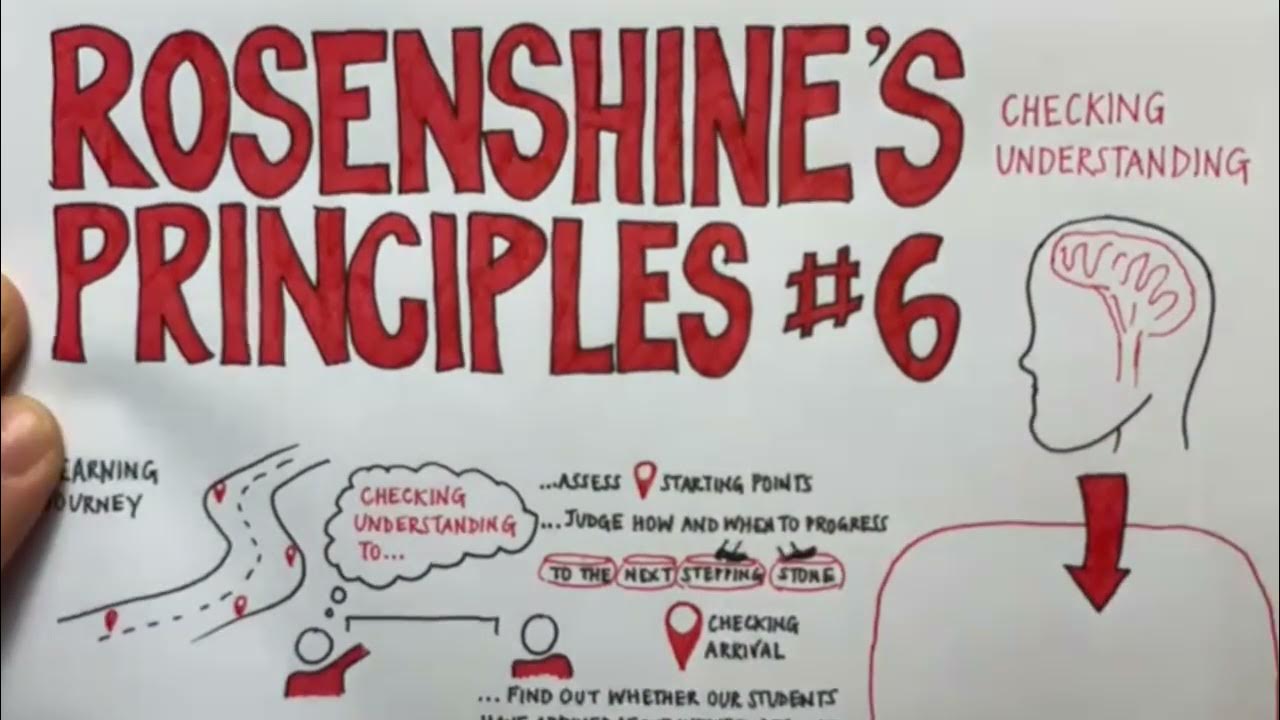Check for understanding
Summary
TLDRThis educational video script explores various strategies teachers employ to check for student understanding during lessons. It highlights the importance of real-time feedback to address misconceptions and adapt teaching methods accordingly. Techniques such as thumbs up/thumbs down, fist to five, white boards, Rally Robin, and Plickers are discussed. The script emphasizes the significance of early detection of learning gaps to prevent them from escalating, ensuring effective learning outcomes.
Takeaways
- 📊 Strategy vs. Tool: A calculator is distinguished as a tool rather than a strategy for problem-solving.
- 📝 Importance of Checking Understanding: Regularly checking student comprehension during lessons is crucial to prevent misunderstandings from becoming more significant.
- 👍 Non-Verbal Feedback Techniques: Using non-verbal cues like thumbs up/down and fist to five can help gauge student understanding without interrupting the flow of instruction.
- 👥 Group Work and Strategy Testing: Pairing students for strategy testing allows them to learn from each other and identify those who need further assistance.
- 🎯 Tailored Instruction: Teachers adjust their instruction based on student self-assessment, focusing on areas where students struggle.
- 🗣️ Language Learning Strategies: Techniques like Rally Robin, which involves partner discussions, are beneficial for English Language Development (ELD) students to practice communication.
- 📈 Formative Assessment Tools: Tools like Plickers enable real-time feedback on student understanding without the need for student technology.
- 🔄 Balancing Equations: An example of balancing equations is used to demonstrate the need for checking understanding during the lesson, not just at the end.
- 📚 Reviewing Previous Work: Starting math lessons with a review of previous work helps teachers quickly assess if students have retained the material.
- 👂 Listening to Students: By listening in on student discussions, teachers can identify misunderstandings and address them promptly.
Q & A
What is the main topic of discussion in the provided transcript?
-The main topic of discussion in the transcript is the strategies teachers use to check for understanding during lessons to ensure students grasp the material being taught.
Why is checking for understanding during a lesson considered important according to the transcript?
-Checking for understanding is considered important because it allows teachers to identify areas where students may be struggling in real-time, enabling them to address misunderstandings promptly and prevent them from escalating.
What is the significance of using a thumbs up, thumbs down, and 'fist to five' method as mentioned in the transcript?
-The thumbs up, thumbs down, and 'fist to five' methods are significant because they provide a quick, non-verbal way for students to indicate their level of understanding, allowing teachers to gauge the class's grasp of the material without disrupting the lesson flow.
What is the 'Expanded Algorithm' strategy mentioned in the transcript?
-The 'Expanded Algorithm' strategy refers to a method where students are encouraged to look for peers who are proficient in a concept to learn from, as a way to enhance their understanding of the material.
How does the teacher in the transcript use small group instruction to address student struggles?
-The teacher identifies students who are struggling with specific strategies and pulls them into small groups for focused instruction, while other students work independently, allowing for targeted support where needed.
What is the 'Rally Robin' strategy and how does it benefit English Language Development (ELD) students?
-The 'Rally Robin' strategy involves students partnering up and discussing the material back and forth. It benefits ELD students by providing them with more opportunities to practice speaking and listening, which helps improve their language skills.
Why is it suggested to re-teach concepts if students are struggling, even if not on the same day?
-Re-teaching concepts is suggested because it ensures that students have a solid understanding of the material before moving forward. Even if it's not on the same day, revisiting the concept allows for reinforcement and correction of any misconceptions.
What is the 'Plickers' tool and how does it assist in checking for understanding?
-Plickers is an online tool where students answer questions on paper cards, which the teacher scans. It helps in checking for understanding by allowing the teacher to quickly collect and analyze student responses without requiring technology from each student.
How does the teacher in the transcript use word problems on white boards to check for understanding?
-The teacher uses word problems on white boards as a way to quickly assess whether students remember and understand the previous day's material. By observing students' work on the boards, the teacher can gauge their comprehension and adjust the lesson accordingly.
What is the significance of the teacher's approach to checking understanding by observing high, middle, and lower achieving students?
-The teacher's approach allows for a tiered assessment of understanding. By observing students of varying abilities, the teacher can get a comprehensive view of the class's grasp of the material and provide targeted assistance where needed.
Outlines

Cette section est réservée aux utilisateurs payants. Améliorez votre compte pour accéder à cette section.
Améliorer maintenantMindmap

Cette section est réservée aux utilisateurs payants. Améliorez votre compte pour accéder à cette section.
Améliorer maintenantKeywords

Cette section est réservée aux utilisateurs payants. Améliorez votre compte pour accéder à cette section.
Améliorer maintenantHighlights

Cette section est réservée aux utilisateurs payants. Améliorez votre compte pour accéder à cette section.
Améliorer maintenantTranscripts

Cette section est réservée aux utilisateurs payants. Améliorez votre compte pour accéder à cette section.
Améliorer maintenantVoir Plus de Vidéos Connexes
5.0 / 5 (0 votes)






